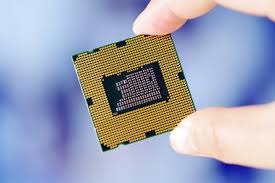
India's Semiconductor Mission: Progress Report of the Last Three Years

 :
| Updated On: 31-Jul-2025 @ 3:04 pm
:
| Updated On: 31-Jul-2025 @ 3:04 pmSHARE
India's Semicon India Programme: Three-Year Progress Overview
Launched in December 2021, the Semicon India Programme is a landmark initiative by the Government of India to promote the development and manufacturing of semiconductors and display technologies within the country. With a massive budget outlay of ₹76,000 crore, the programme was designed to build a robust semiconductor ecosystem, reduce dependence on imports, and place India among the global leaders in semiconductor innovation.
A crucial part of this initiative is the Design Linked Incentive (DLI) Scheme, which is specifically aimed at nurturing Indian talent in chip design and semiconductor innovation. Under this scheme, a separate allocation of ₹1,000 crore has been earmarked to provide financial assistance to Indian companies, Micro, Small and Medium Enterprises (MSMEs), and startups involved in semiconductor design. The scheme offers up to 50% cost support for eligible companies, capped at ₹15 crore per applicant.
Despite facing multiple challenges and roadblocks common to high-technology manufacturing sectors, the programme has seen measurable success. According to a progress report released by the Ministry of Electronics and Information Technology (MeitY), a total of ₹803.08 crore has already been approved and distributed under the DLI scheme since the programme's inception. This financial support has directly benefited 23 companies and startups, who are engaged in designing semiconductor chips for a variety of cutting-edge applications such as microprocessors, network hardware, energy metering devices, and surveillance systems.
MeitY also noted that these companies are currently at varying stages of chip design and development. Future fund disbursements will be contingent on each company meeting clearly defined design and production milestones. The Ministry also reported that 10 of the 23 supported companies have successfully raised venture capital funding, enabling them to expand their operations and upscale production capacity.
Beyond just financial aid, the programme also emphasizes design infrastructure support. MeitY is assisting startups, academic institutions, and R&D bodies by giving them access to advanced semiconductor design tools and facilities. One key example is the Semiconductor Laboratory (SCL) in Mohali, a premier government facility where 17 academic institutions have already successfully fabricated 20 chip designs. This milestone marks significant progress in indigenous chip development and design capabilities.
Moreover, as part of the design ecosystem support, MeitY has granted 72 startups and 278 academic institutions access to Electronic Design Automation (EDA) tools, which are essential for modern chip design. These tools include advanced software and hardware systems that allow simulation, testing, and validation of chip designs before manufacturing.
In conclusion, the Semicon India Programme has laid the foundation for a self-reliant semiconductor industry in India. With substantial financial investment, strategic government support, and growing interest from the private sector, the programme has made significant strides within just three years. As companies move toward production and commercial-scale deployment, India is on track to emerge as a significant player in the global semiconductor supply chain.